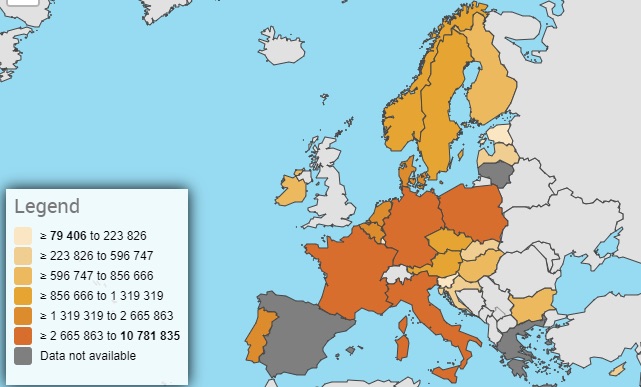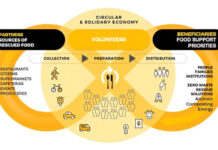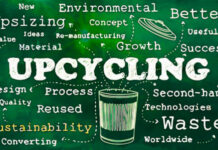On 29 September 2024 – the fifth edition of the International Day Against Food Waste – the European Commission released the 2022 data on ‘Food Loss and Waste’, at EU and national level. In addition to an anti-waste recipe book, under the banner of ‘Zero Waste, More Taste!’ (1,2).
1) International Day of Awareness of Food Loss and Food Waste
International day of Awareness of Food Loss and Food Waste (IDAFLW) is an event organized by the United Nations together with FAO (Food and Agriculture Organization) and UNEP (UN Environment Program), with the aim of promoting the goal of halving per capita food waste, globally, by 2030 (Sustainable Development Goals, Target 12.3). (3)
The latest initiatives adopted in this direction, in the European Union, concern:
– the revision project of the waste directive, which includes new targets for reducing food loss and waste (FLW)
– the development of voluntary agreements between public and private parties, in different Member States.
2) Food losses and waste, the data collection system in the EU
The European Commission (DG Estat, Eurostat) publishes every year data on food losses and waste, which are:
– collected from Member States, pursuant to Decision (EU) 2019/1597 (to which the questionnaire of the Wasteless research project);
– divided by each stage of the supply chain, based on the NACE classification of economic activities, as well as by consumers.
3) Food loss and waste, EU 2022 data
Food losses and waste are estimated to amount to 132 kg/year overall, as an EU per capita average, for a total of 59,2 million tonnes in 2022. These data are disaggregated as follows:
– primary production: 10 kg per capita, 4,6 million tonnes (8%);
– manufacturing of food and beverage products: 25 kg, 11 mln t (19%);
– distribution: 11 kg, 4,8 mln t (8%);
– restaurants and food services: 15 kg, 6,6 million tonnes (11%);
– families: 72 kg, 32,1 t (54%).
The ranking FLW by Member State sees Germany (18,21%), France (15,96%) and Italy (13,85%) at the top, in the same order as they are found for food production levels. (4)

4) JRC, material flow analysis model
JRC – the Joint Research Center of the European Commission – has developed at its headquarters in Italy (ISPRA) a model of material flow analysis (MFA), aimed at systematically evaluating the flows of stocks and materials in a defined space/time system. (5)
The MFA model could allow you to:
– develop a harmonised method for measuring food loss and waste in the EU and its Member States
– increase the reliability and significance of the collected data,
– use the aforementioned data for other statistical evaluations (e.g. estimation of food consumption, social conditions and economic impact of producing countries).
4.1) Material Flow Analysis, the results
EU Bioeconomy Monitoring System Dashboard allows you to observe the results of the measurements performed with the MFA model, divided into two indicators:
– supply chain stages. The distribution of FLW in the supply chain is similar to that provided by Eurostat, but the total of food losses and waste is much higher (84.587.200 t in 2021, + 42,9%). A difference that can be considered as a benchmark to hypothesize the underestimation of measurements by Member States;
– food categories. JRC refers to 11 macro-categories of food products: vegetables (26,1%); sugar (0,9%); potatoes (9,6%); oilseeds (1,9%); meat (11,6%); fruit and dried fruit (21,3%); fish (3,3%); eggs (1,9%); dairy products (7,8%); cocoa and coffee (4,4%); cereals (11,2%). (6)


5) Anti-waste recipes
A recipe book anti-waste has also been published by the European Commission, thanks to the collaboration of several chefs including the environmental cuisine expert chef Chiara Pavan, member of the advisory board of the Life Climate Smart Chefs project.
Target of this project is to contribute to the implementation of the EU strategy Farm to Fork through the active involvement of European chefs as promoters of low-carbon, nutritious and accessible diets that reduce environmental impact, improve public health and combat food waste. (7)
27 chefs, representing the 27 Member States, describe a recipe that can help families reduce waste by valorising ingredients that are normally undervalued or destined for waste. At the same time celebrating the variety of gastronomic traditions and cultures of the Old Continent.
6) Provisional conclusions
The commitments to fight food waste and promote its prevention and reduction must continue, in the EU and across the planet, and involve all the players in the agri-food supply chains. Research projects and ‘communities of practice’ such as Wasteless, in Horizon Europe, therefore deserve widespread commitment in sharing good practices for the virtuous recovery (upcycling) of waste (8,9).
Current estimates of FLW in the European Union must be developed accurately, to effectively reflect the status of food losses and waste in the various Member States. Thanks also to tools aimed at improving the efficiency of the JRC MFA model, such as those developed in the aforementioned Wasteless project. The availability of data is in fact the basis for measuring and obtaining significant results.
Dario Dongo and Andrea Adelmo Della Penna
Footnotes
(1) Eurostat. Food waste: 132 kg per inhabitant in the EU in 2022. Press release. 27.9.24 https://tinyurl.com/mv8hh8xu
(2) European Commission (2024) Zero Waste, More Taste! – 27 chefs’ secrets to reduce food waste. Publications Office of the European Union https://tinyurl.com/yckdcu4a
(3) Alessandra Mei. September 29, the international day against food waste. GIFT (Great Italian Food Trade). 29.9.23/XNUMX/XNUMX
(4) Food waste and food waste prevention by NACE Rev. 2 activity – tonnes of fresh mass. 27.9.24 https://tinyurl.com/s9zr9n9k
(5) JRC studies on the MFA model:
– Quantification of food waste per product group along the food supply chain in the European Union: a mass flow analysis;
– Grown and thrown: Exploring approaches to estimate food waste in EU countries;
– Building a balancing system for food waste accounting at national level Ver 1.0 and 2.0
(6) EU Bioeconomy Monitoring System Dashboard. Update 21.3.23 https://tinyurl.com/3pucej7w
(7) Climate Smart Chefs https://climatesmartchefs.eu/
(8) Dario Dongo, Andrea Adelmo Della Penna. Wasteless, EU research project on circular economy and blockchain. GIFT (Great Italian Food Trade). 5.9.22
(9) Dario Dongo. Upcycling, the main road to research and innovation. GIFT (Great Italian Food Trade). 1.1.23









